This lovely, colourful science experiment is super easy to set up and carry out but looks amazing! As well as being fun to watch it’s also great for learning about density ( the oil layer floats on top of the water ) and diffusion ( as the food colouring spreads out through the water layer).
Colourful Jar Experiment
You’ll need
A jar or glass
Warm water
Oil
Food Colouring
Pipette
Instructions
Fill the glass or jar about ¾ full of warm water
Carefully pour a small layer of oil onto the surface of the water and leave it to settle. Note that oil and water don’t mix!
Use a pipette to carefully drop small amounts of food colouring into the jar. You should see the food colouring drop through the oil into the water leaving colourful trails behind.
Why do oil and water not mix?
Water is a polar molecule – its structure means that it has a positive charge at one end and a negative charge at the other. Water molecules stick together because the positive end of one water molecule is attracted to the negative end of another. The structure of an oil molecule structure is different – it is non-polar, which means its charge is more evenly spread out. Oil is hydrophobic (water fearing) so it tries to get as far away from water as possible.
Why does oil sit on top of the water?
The reason that oil rests on top of the water rather than underneath is because oil is less dense than water.
Why does food colouring not mix with oil?
The food colouring we used was water based and therefore does not mix with the oil, but sinks through the oil into the water below. Surface tension between water molecules pulls the food colouring into the sphere shapes you see in the oil.
Why does the food colouring leave trails?
Since the addition of the colouring makes the food colouring heavier than the water it sinks to the bottom leaving trails (resembling fireworks) as some of the colour diffuses into the water.
More Science Experiments with Water
Rookie Parenting has a brilliant travelling water demonstration.
Try my easy density trick using salt, water and food colouring.
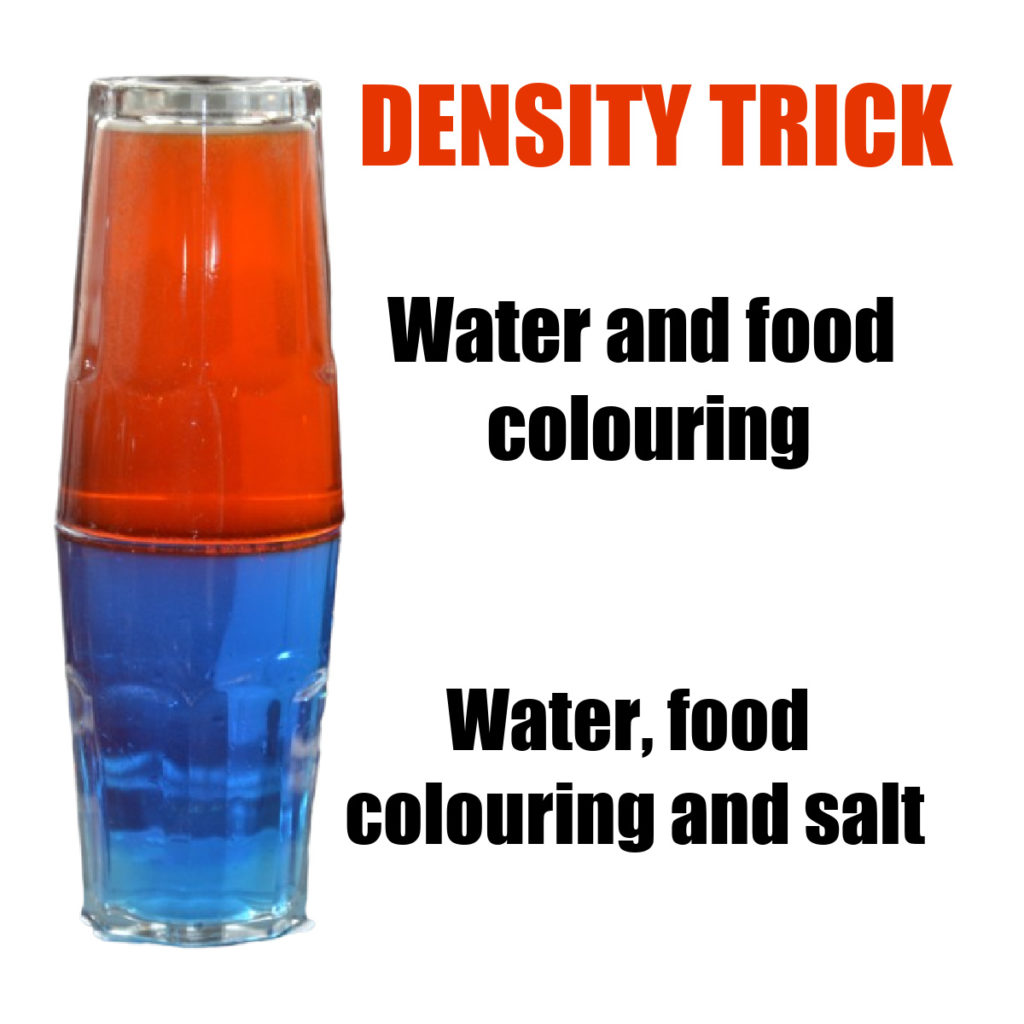
Discover the best material for waterproofing a dinosaur!
Or, try one of my many other water science experiments for kids!
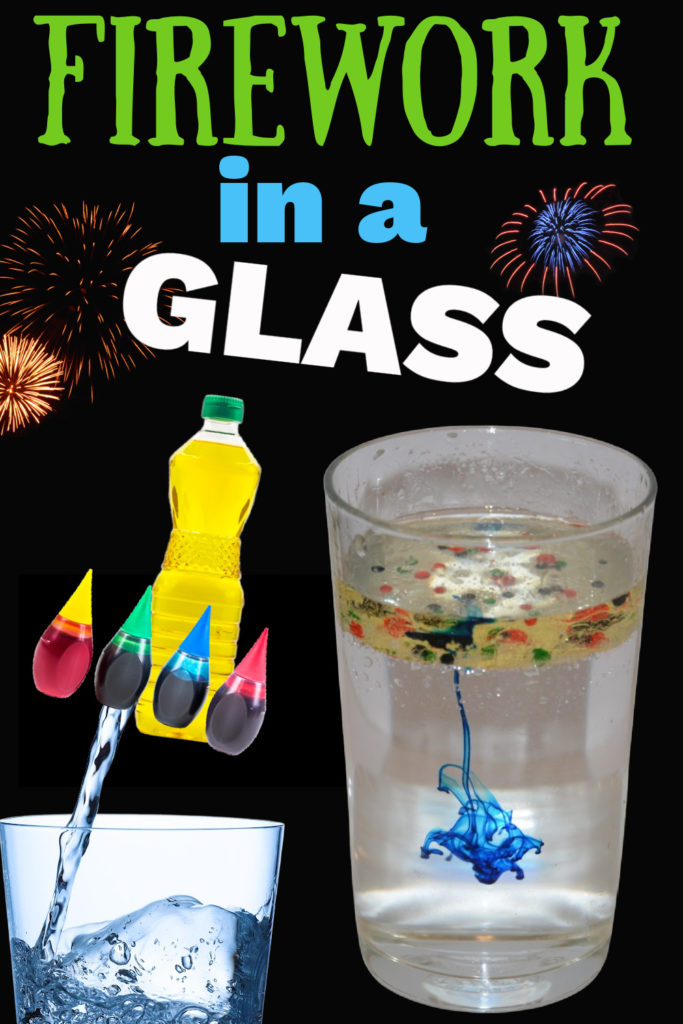
Last Updated on November 13, 2022 by Emma Vanstone

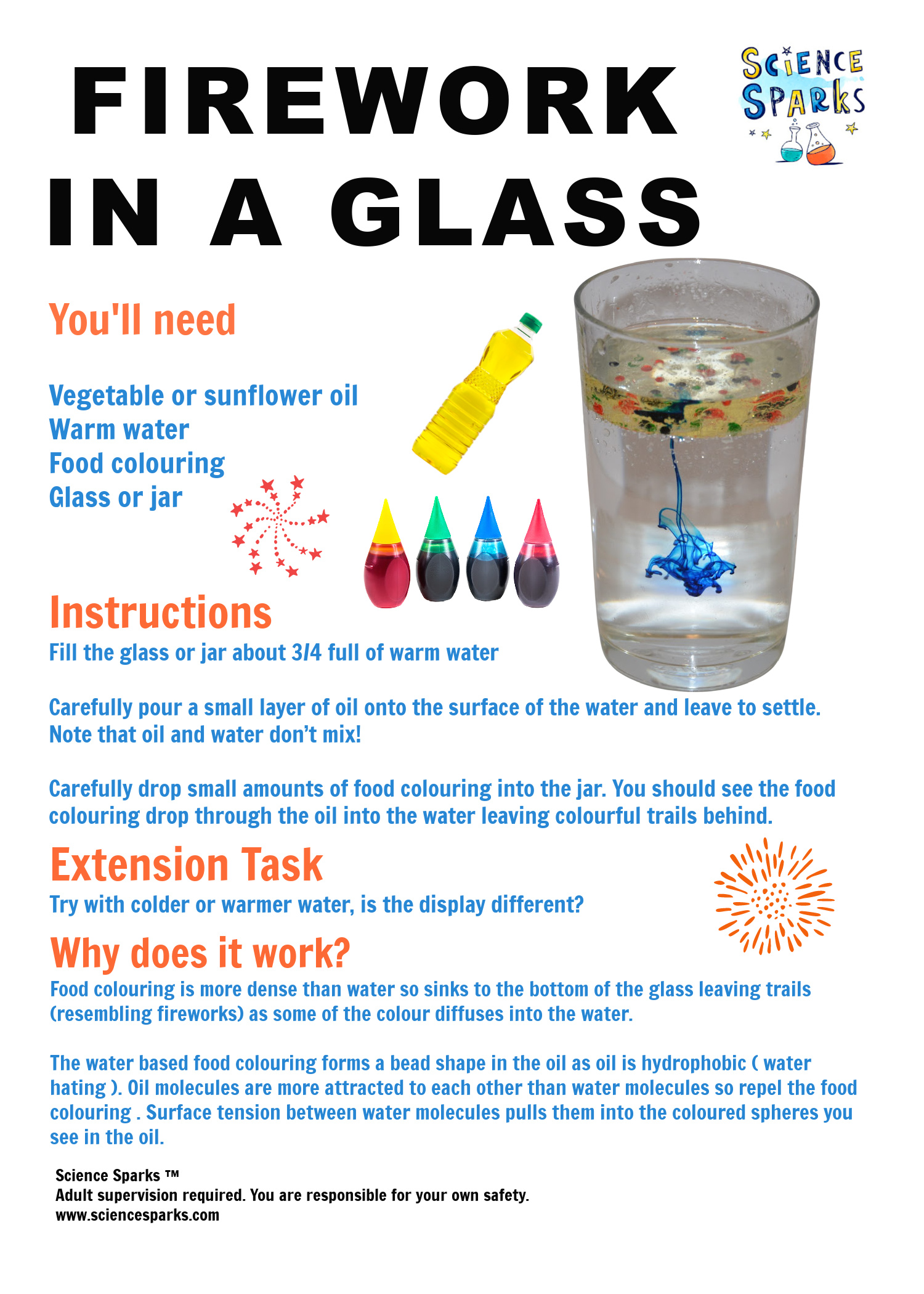
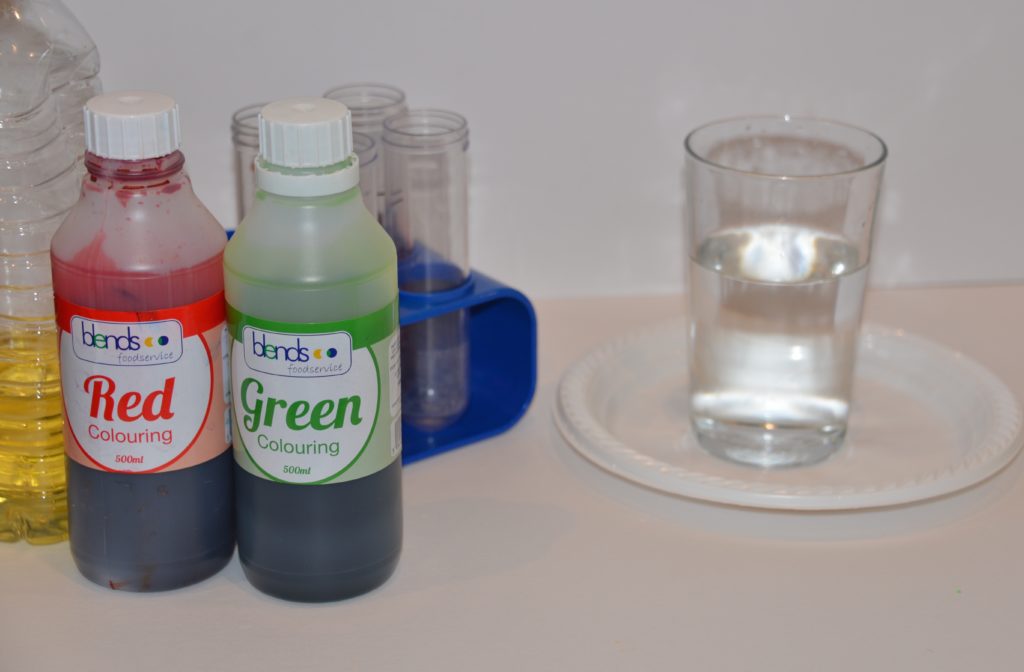
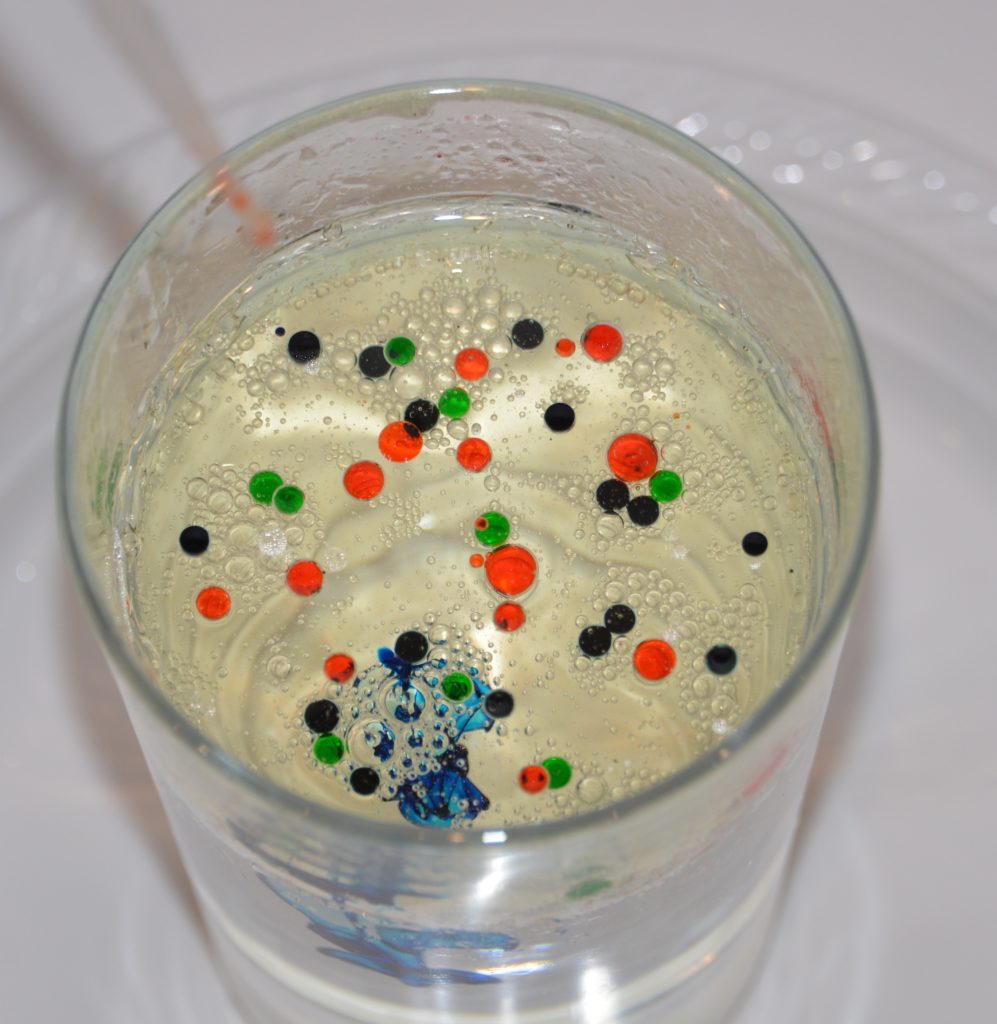
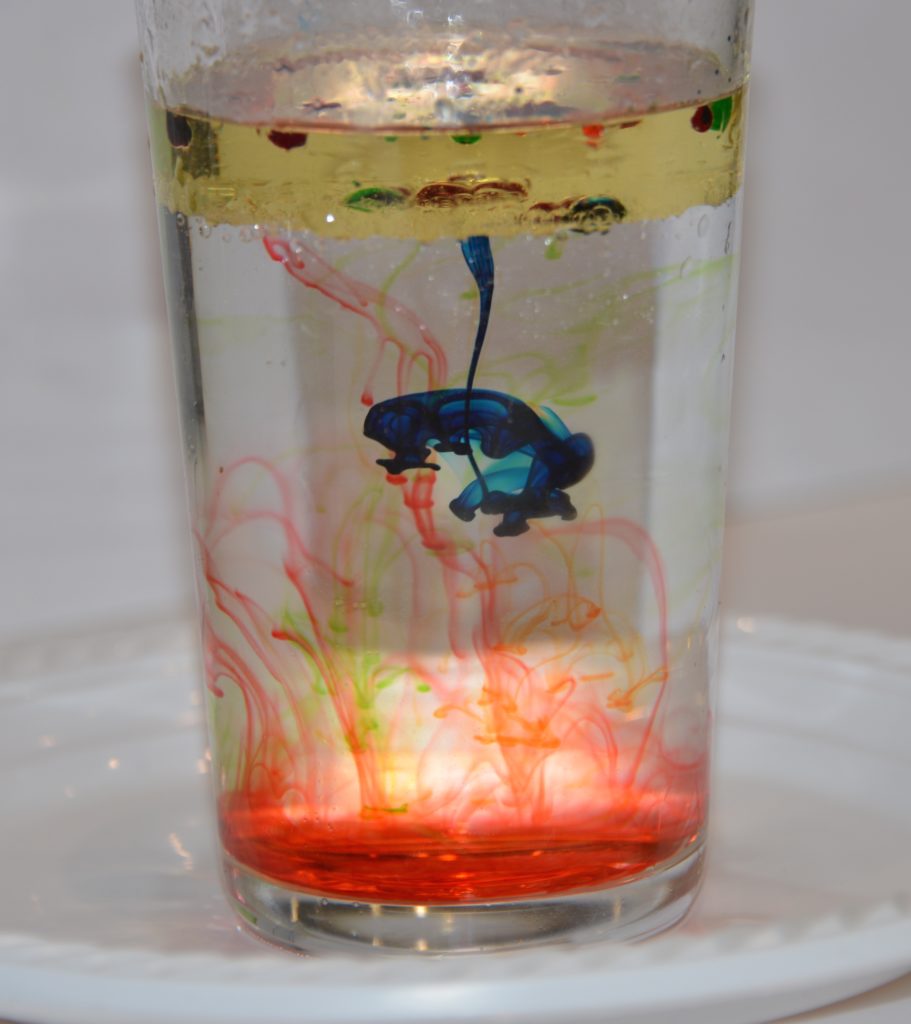
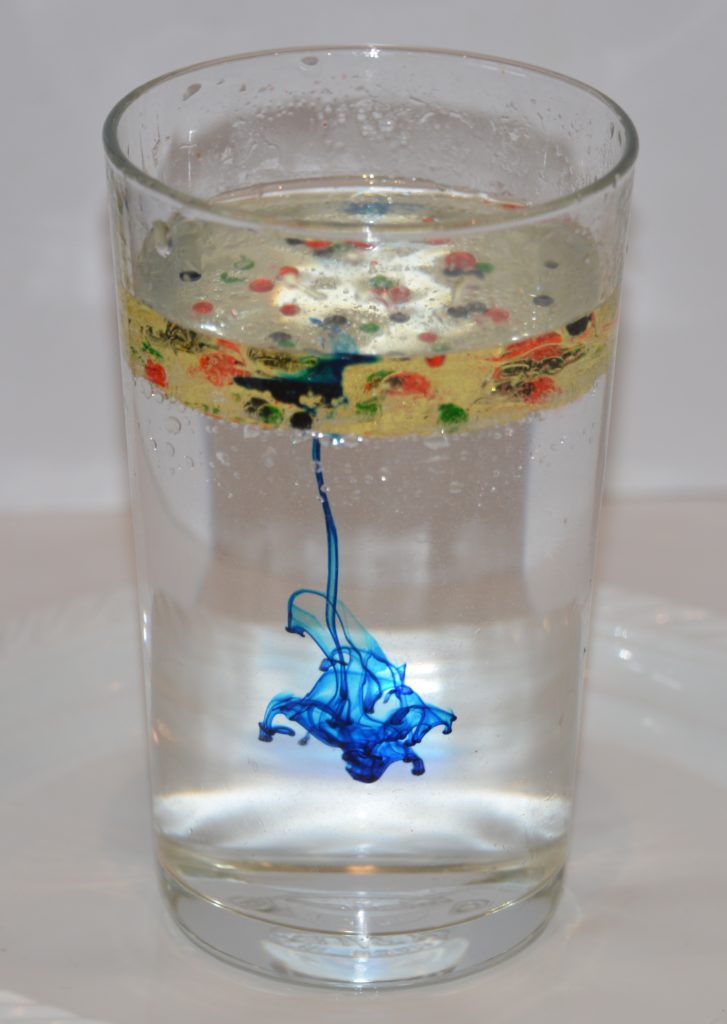
These are awesome experiments! I do science day at a camp ground during the summer. I can’t wait to try some of these. My kids will be very busy during the winter!
This looks great. I can’t wait to try this.
May I please share this on my Caney Valley Reading and Math Resource Page when we have Virtual Days.
Nancy Jamison
Title 1 Reading & Math Intervention Specialist and Gifted & Talented Specialist
[email protected]
Of course!
Just did this with my daughter. She put way too many drops in so it’s just a dark cup of water with oil on top which she keeps dipping her fingers into. She gets excited. She tried to use the entire bottle of food coloring instead of a couple drops at a time. She gets excited. 9/10 would definitely recommend